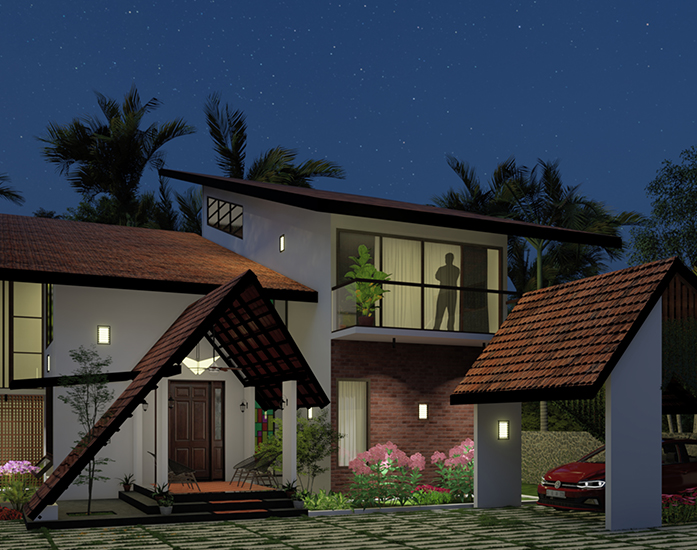
Landscaping in Kerala, with its tropical climate and rich biodiversity, presents a canvas of opportunities and challenges. Whether you’re a homeowner looking to enhance your garden or a developer planning a larger project, understanding the dos and don’ts of landscaping is crucial.
From selecting native plants to managing water resources effectively, here’s a comprehensive guide to navigating the green scene in Kerala.
Dos
1. Embrace Native Flora
In the lush tapestry of Kerala’s landscape, native plants play a starring role. Embracing local flora not only ensures that your garden or project is in harmony with the natural environment but also reduces the maintenance challenges associated with non-native species.
Native plants are well-adapted to the local climate, requiring less water and care, and they contribute to the overall ecological balance by supporting native fauna such as birds and butterflies.
Choosing native plants for landscaping in Kerala is a sustainable practice that celebrates the region’s natural beauty. Consider incorporating indigenous species like coconut palms, jackfruit trees, or vibrant orchids to create a garden that seamlessly integrates with the surrounding ecosystem.
2. Sustainable Water Management
Water is a precious resource in Kerala, and sustainable water management is a landscaping imperative. Opt for water-wise practices such as drip irrigation systems, rainwater harvesting, and the use of permeable surfaces.
Drip irrigation ensures targeted watering, minimizing water wastage, while rainwater harvesting helps replenish groundwater levels, especially during the monsoon season.
Incorporating permeable surfaces like gravel or porous pavers allows rainwater to penetrate the soil, reducing runoff and soil erosion. Additionally, consider grouping plants with similar water needs together to optimize irrigation efficiency.
By adopting sustainable water management practices, you not only conserve this vital resource but also contribute to the overall resilience of Kerala’s ecosystems.
3. Design for Microclimates
Kerala’s diverse topography creates microclimates within the region, each with its own set of environmental conditions. When landscaping, it’s essential to design with these microclimates in mind.
Consider factors such as sunlight exposure, wind patterns, and variations in elevation. Plant placement should be strategic, taking into account the specific needs of different species based on the microclimate they thrive in.
For example, shade-loving plants can be strategically placed in areas with limited sunlight, while sun-loving varieties can be featured in open, sunny spaces. This thoughtful approach ensures that your landscaping not only survives but thrives in the unique microclimates found throughout Kerala.
4. Blend Hardscape with Greenery
The integration of hardscape elements with greenery creates a balanced and visually appealing landscape. Consider blending natural stone pathways, terraces, or seating areas with lush green lawns and vibrant plantings. This harmonious combination not only adds aesthetic value but also provides functional spaces for relaxation and outdoor activities.
Using locally sourced materials for hardscape elements not only supports the regional economy but also ensures that the design aligns with the natural surroundings.
The careful juxtaposition of hardscape and greenery contributes to the creation of inviting and functional outdoor spaces that seamlessly connect with Kerala’s natural beauty.
5. Incorporate Traditional Landscaping Elements
Kerala boasts a rich cultural heritage, and incorporating traditional landscaping elements can add a touch of authenticity to your outdoor space.
Consider features like traditional water fountains, stone sculptures, or ornamental gates that reflect the local architectural style. These elements not only pay homage to Kerala’s cultural identity but also infuse character and charm into the landscape.
Traditional landscaping elements can be adapted to modern designs, creating a fusion that honors the past while embracing contemporary aesthetics. This blending of tradition and innovation adds a unique flavor to your landscaping project, making it a reflection of Kerala’s rich cultural tapestry.
Don’ts
1. Avoid Invasive Plant Species
While native plants are encouraged, the introduction of invasive plant species should be strictly avoided. Invasive plants can outcompete and displace native flora, leading to ecological imbalances. They may also require excessive resources for maintenance, contributing to environmental degradation.
Be aware of the potential impact of introducing non-native plants and carefully research the characteristics of each species before including them in your landscaping plans. By steering clear of invasive species, you contribute to the preservation of Kerala’s natural biodiversity.
2. Overlooking Drainage Considerations
Given Kerala’s heavy monsoon rains, proper drainage is paramount in landscaping projects. Failing to address drainage considerations can lead to waterlogging, soil erosion, and damage to plant roots.
Avoid designs that impede natural water flow and consider incorporating features like swales or French drains to direct excess water away from sensitive areas.
Furthermore, choose plants that can withstand periods of heavy rainfall and waterlogged conditions. Proper drainage not only protects your landscaping investment but also ensures the health and vitality of the planted vegetation.
3. Excessive Use of Chemicals
Resist the temptation to rely heavily on chemical fertilizers and pesticides. Kerala’s delicate ecosystems can be adversely affected by the overuse of chemicals, leading to soil degradation and harm to beneficial insects. Instead, opt for organic and sustainable gardening practices that promote soil health and biological diversity.
Implementing composting, mulching, and natural pest control methods can enhance the fertility of the soil without resorting to harmful chemicals. By minimizing the use of synthetic inputs, you contribute to the long-term health of the environment and create a more sustainable and resilient landscape.
4. Ignoring Local Architectural Styles
Landscaping should complement the existing architecture and aesthetic traditions of the region. Ignoring local architectural styles can result in a discordant and visually jarring landscape. Whether it’s a residential garden or a commercial project, the design should harmonize with the surrounding buildings and cultural context.
Consider consulting with local landscape architects in Kerala who are familiar with Kerala’s architectural styles. By integrating landscaping with the local built environment, you create a cohesive and visually pleasing outdoor space that seamlessly blends with the surrounding structures.
In Conclusion
Navigating the green scene in Kerala involves a delicate balance of embracing local ecosystems, respecting cultural traditions, and implementing sustainable practices.
The dos and don’ts of landscaping in this vibrant region serve as a guide for creating outdoor spaces that not only enhance the beauty of the surroundings but also contribute to the ecological health of Kerala.
Whether you’re embarking on a small garden project or a larger landscaping endeavor, thoughtful consideration of these principles will guide you toward a landscape that thrives in harmony with Kerala’s unique natural and cultural heritage.
If you’re seeking a landscaping company in Kerala, you have a myriad of options available. Discover the best landscaping company in Kerala to collaborate with and bring your dream outdoor space to life.


